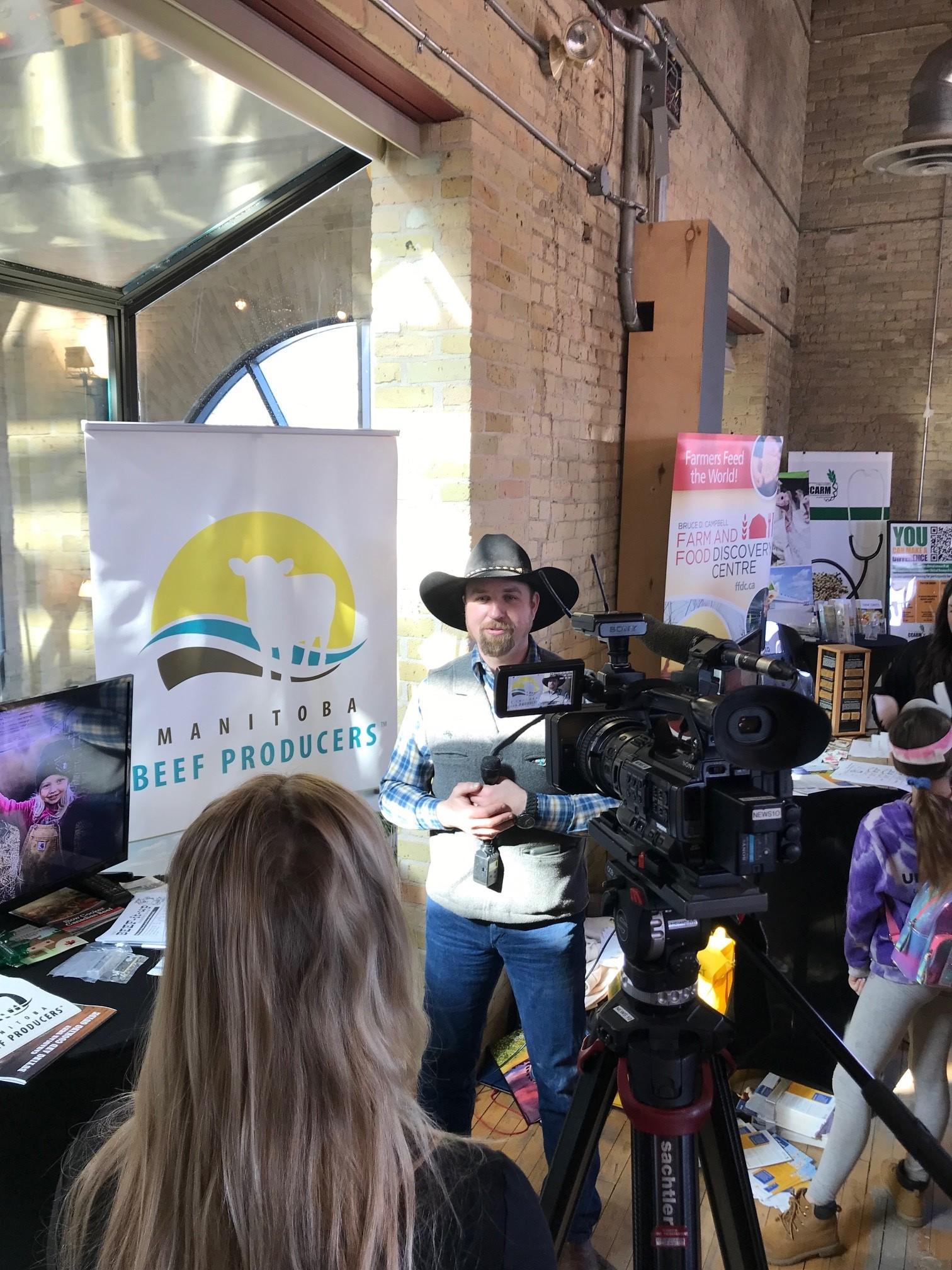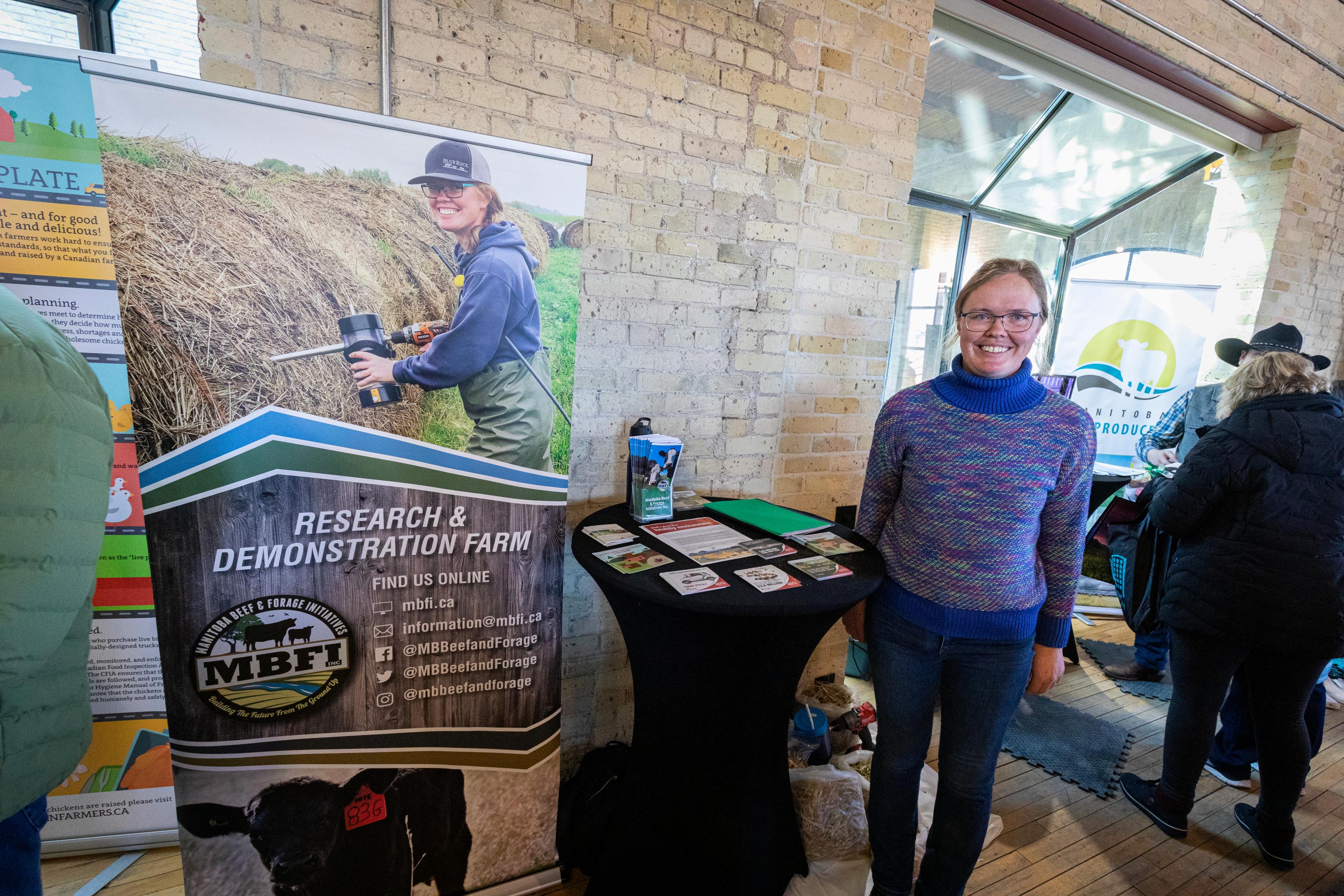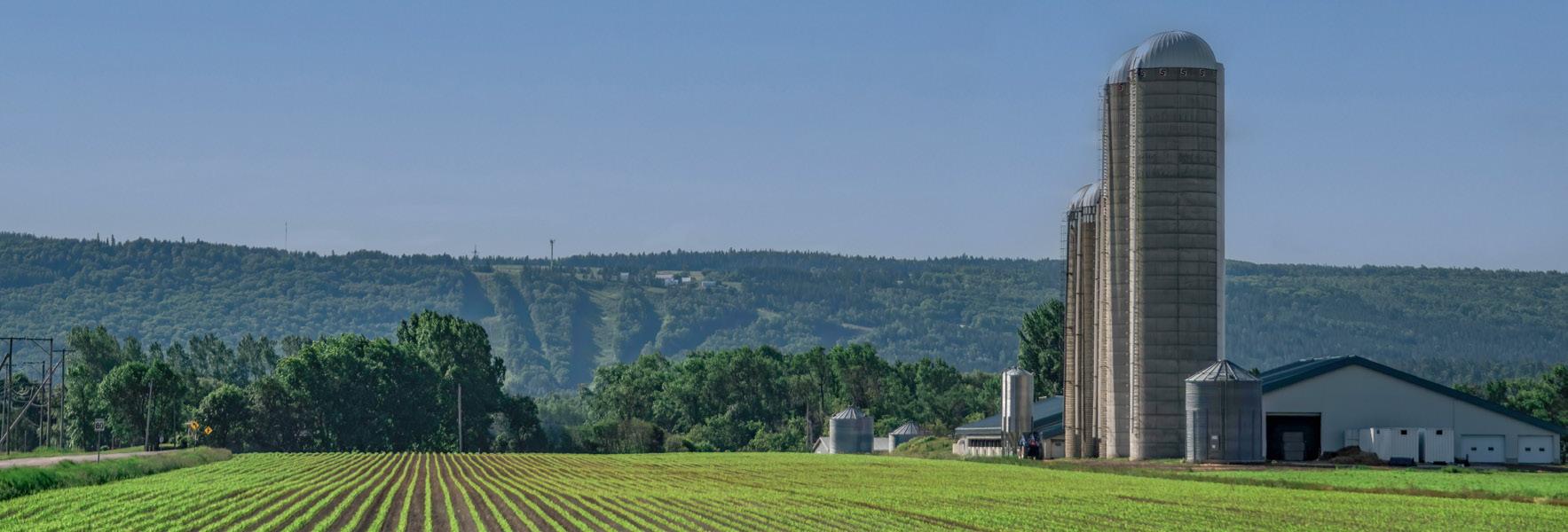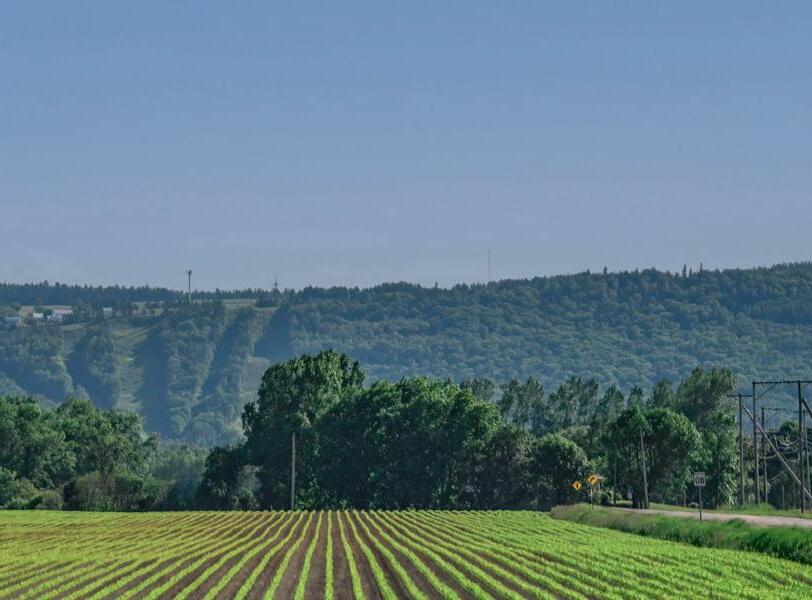Province Releases March Spring Flood Outlook
(March 22, 2023 Province of Manitoba News Release)


(March 22, 2023 Province of Manitoba News Release)



Manitoba Transportation and Infrastructure’s Hydrologic Forecast Centre reports a major risk of flooding on the Red River and low to moderate risk of flooding in most Manitoba basins in its March spring outlook. Spring flood risk largely depends on weather conditions from now until the spring melt.
At this time, the centre advises that due to recent precipitation events south of the border in the United States, the flood risk has increased to major on the Red River. The flood risk is low to moderate in the Interlake region along the Fisher and Icelandic rivers, and along the Assiniboine River. The risk of spring flooding is generally low along several other rivers including the Souris, Roseau, Rat and Pembina rivers. Water levels are expected to remain below community and individual flood protection levels.
There is also a low risk of flooding for most other Manitoba basins including the Saskatchewan River, Whiteshell lakes area and northern Manitoba. With the exceptions of Dauphin Lake and Lake St. Martin, most Manitoba lakes, including Lake Winnipeg and Lake Manitoba, are projected to remain within operating ranges after the spring run-off.
As in many other years, the risk of flooding could change in any of the basins depending on weather conditions between now and the spring melt.
Manitoba Transportation and Infrastructure, through a contract with Winnipeg Environmental Remediations Inc., has completed ice-cutting and breaking work along the Red and Icelandic rivers to reduce ice jam-related flooding. Ice-cutting and breaking work were not undertaken this spring on the Assiniboine River, along the Portage Diversion, due to a lower risk of ice jam-related flooding.
The centre also reports that operation of the Red River Floodway is expected this spring to reduce water levels within Winnipeg. Operation of the Portage Diversion is also anticipated to prevent ice jamming on the Assiniboine River east of Portage la Prairie and control river levels in Winnipeg and areas along the Assiniboine River downstream of Portage la Prairie.
The province, local authorities and First Nation communities are continuing to prepare for spring flooding. This includes ice-cutting and breaking on the Red and Icelandic rivers, review of existing emergency response plans, information sharing, and preparation of resources used in flood response.
The March 2023 spring flood outlook report is available at www.gov.mb.ca/mit/floodinfo/pdf/2023/march_2023_flo od_outlook_report.pdf.
An update from MBP March 24, 2023 mbbeef.ca

Manitoba producers are reminded that there is still time to participate in an online research survey related to swath grazing.

The purpose of the swath grazing research is to understand the use of swath grazing and spring residue cleanup by western Canadian cow-calf operations. Producer responses will help promote strategies that will advance the Canadian beef industry. This study is for research purposes only.
Respondents can be both adopters, non-adopters and dis-adopters of swath grazing as they wish to hear how adopters swath graze, why non-adopters choose not to swath graze and why dis-adopters stopped swath grazing. The survey will close when 600 respondents are reached (likely March 31, 2023).
The swath grazing survey research is funded by Alberta’s Results Driven Agriculture Research and is being conducted by researchers at the University of Saskatchewan (Kathy Larson) and Lakeland College (Dr. Obi Durunna). Dr. Durunna is a Livestock Research Scientist at Lakeland College and an Adjunct Professor at the University of Saskatchewan and Larson is a Professional Research Associate at the University of Saskatchewan’s College of Agriculture and Bioresources, Department of Agricultural and Resource Economics.
The survey link is: https://ca1se.voxco.com/SE/90/Swathgrazing/
Anyone with questions about the 2023 survey can contact Larson at kathy.larson@usask.ca or at (306) 966-4025.
(March 24, 2023 Province of Manitoba News Release) The Manitoba government continues to restore, repair, and rehabilitate infrastructure damaged during the spring 2022 flood event, Transportation and Infrastructure Minister Doyle Piwniuk announced.
“Our government continues to focus on proactive measures to reduce future natural disaster impacts and increase the resiliency of our communities,” said Piwniuk. “Critical investment in infrastructure protection will ensure our province is safeguarded from the potential damage of future weather events. Protecting Manitoba’s infrastructure is part of our government’s mitigation strategy and we are committed to further advancing preparedness solutions to enable communities and all Manitobans to continue to thrive even after experiencing significant weather events.”
The minister noted that over $9 million in preemptive and response work related to the spring 2022 flood event has been completed including $6.4 million for 16 projects in the Parkland region and an additional $45 million in capital infrastructure work tendered. Several consulting assignments have been awarded for culvert inspections, structure stabilization and replacements resulting in new construction projects for 2023, the minister added.
The Department of Transportation and Infrastructure estimates $193.5 million in costs from the 2022 flood, including $182 million in recovery work to be completed in the next three years.
Key projects underway include:
• $3.5 million for structure rehabilitation of the Bell River bridge on Provincial Trunk Highway 10 in the Rural Municipality of
Mountain, including completed embankment reconstruction and river channel realignment. Further design and construction of long-term river training work is underway.
• $3.5 million for structure replacement of Boundary Creek culverts through Prospect Road in Winnipeg Beach, which were removed to prevent upstream flooding. Construction is proposed for later this year.
• $2.4 million for structure replacement of the Silver Harbour Bridge on Reconciliation Road in the Rural Municipality of Gimli. A replacement bridge is expected to open in April, with approach roadworks completed later this summer.
• $3.5 million for structure replacement of Mary Jane Dam in the Rural Municipality of Pembina after the emergency spillway sustained significant erosion. The rehabilitation, designed for a one-in-100year flood event, will be substantially completed by the end of March.
In addition to supporting municipalities in recovery through the Disaster Financial Assistance Program, municipalities can apply disaster financial assistance deductibles into an approved mitigation or preparedness project that builds resiliency against future events through the Mitigation and Preparedness Program (MPP). This innovative initiative will invest millions into local projects that help municipalities prepare for future events, the minister added.
To learn more about the MPP visit: www.gov.mb.ca/emo/mitigation/mpp.html
The Manitoba government is reviewing renewed program plans for the responsible management of end-of-life materials for electrical and electronic equipment, household hazardous waste, medication and medical sharps, tires, agricultural packaging, and used oil, oil filters and containers. Current program plans for these materials are reaching the end of their current approval term (2018-2023).
Under The Waste Reduction and Prevention Act’s stewardship regulations(External link), stewardship organizations have submitted these proposed plans on behalf of the manufacturers, distributors and retailers (the “stewards”) who sell their products into Manitoba. Every five years the Minister of Environment and Climate approves renewed program plans. Renewing stewardship plans is an opportunity to modernize waste diversion and recycling in Manitoba, such as setting new targets for the programs.
We are inviting you to review the program plans below and share your views by submitting a written submission. We want to hear from you to better understand Manitobans’ perspectives on these stewardship programs to inform our review of these plans and where government should focus efforts to improve waste diversion and recycling in the province.
Link to survey: https://engagemb.ca/renewedrecycling-and-waste-diversion
Plans for agricultural packaging:
• Cleanfarms’ Stewardship Program Plan for Designated Crop Input Packaging(External link)
Plans for used oil, oil filters and containers:
Manitoba Association for Resource Recovery Corp.’s (MARRC) Used Oil, Antifreeze & Diesel Exhaust Fluid Products Stewardship Program Plan
• MARRC Part 1. Stewardship plan, financial model components, program plan evaluation, licensed collection system design (pp. 1-79)(External link)
• MARRC Part 2. Remote northern communities, consultation process (pp. 80-159)(External link)
• MARRC Part 3. Creating awareness and promotional activities (pp. 160281)(External link)
• MARRC Part 4. Budget target forecasting for oil and antifreeze products, performance measures, dispute resolution procedures, pollution prevention practices, annual report financial statements, proposed additional product categories (pp. 282326)(External link)
• MARRC Part 5. Appendices 1-4 (pp. 327390)(External link)
• MARRC Part 6. Appendices 5-10 (pp. 391-536)(External link)
Plans for tires:
• Tire Stewardship Manitoba’s Tire Recycling Program Plan(External link)
Plans for electrical and electronic equipment:
• Bell MTS Set-Top Box Electronic Equipment Stewardship Plan Proposal for Manitoba(External link)
• Electronic Products Recycling Association’s End-of-Life Electronics
continued on page 6
Stewardship Program Manitoba(External link)

Plans for household hazardous waste, medications and medical sharps:
• Call2Recycle’s Battery Stewardship Renewal Plan for Manitoba(External link)
• Canadian Battery Association’s Stewardship Program for Lead Batteries(External link)
• Health Products Stewardship Association’s Proposed Manitoba Medications Return Program Plan and Sharps Collection Program Plan(External link)
• Heating, Refrigeration and Air Conditioning Institute of Canada’s Manitoba Stewardship Plan for Mercury-Containing Thermostats(External link)
• Product Care Association of Canada’s Manitoba Household Hazardous Waste Stewardship Program Plan(External link)
The deadline for comments is Friday April 28, 2023.

You may submit your comments online through this EngageMB webpage. Alternatively, you can email feedback to stewardshipplans@gov.mb.ca(External link) or submit your comments in writing to:
Stewardship Plans Feedback
Environmental Policy and Delivery Unit
Environment and Climate Box 37, 14 Fultz Blvd
Winnipeg MB R3Y 0L6
To request this information in an alternate format, please contact stewardshipplans@gov.mb.ca(External link).
The Canadian Food Inspection Agency (CFIA) is proposing changes to Part XV (Animal Identification) of the Health of Animals Regulations to improve the livestock identification and traceability system in Canada.
If you own sheep, goats, pigs, cattle, bison or farmed cervids or are involved with livestock production or handling, we encourage you to share your feedback during the 90-day consultation period from March 18, 2023 to June 16, 2023. See:
• Share your thoughts: Consultation on proposed changes to Part XV of the Health of Animals Regulations (Identification and Traceability)
The Canadian Food Inspection Agency (CFIA) is proposing amendments to Part XV of the Health of Animals Regulations (Identification and Traceability) to enable a more effective and timely response to disease outbreaks and food safety issues, and improve support for disease surveillance activities.
The regulatory proposal would address the gaps in the current livestock identification and traceability system, including:
• adding goats and cervids as animal species that share diseases with other regulated livestock, and therefore subject to traceability requirements
• shortening the time period allowed to report an event to better support an efficient response to disease outbreaks
• adding a requirement to provide information about the geographical location of sites where animals are located
• requiring the reporting of domestic movements of livestock
Over the last decade, industry and government representatives have been working together on the livestock traceability file. Consultations with industry and provinces identified some gaps and opportunities to improve Canada's livestock traceability system. Feedback received set the foundation for proposed regulatory changes. The proposed amendments are expected to strengthen Canada's ability to respond quickly to animal health threats and other emergencies.
This is an opportunity to share your views to inform changes to the regulations. The input gathered through this consultation will be used to improve the regulations, help Canada build a robust and effective livestock traceability system, and improve the Government of Canada's ability to respond quickly to animal health threats and other emergencies.
• Read the proposed regulations in Canada Gazette Part I which has the full text of the proposed regulations and the regulatory impact analysis statement (RIAS).
continued on pages 8-10
• Read the following guides developed to help regulated parties understand the proposed regulatory requirements:
o A guide for livestock producers and owners
o A guide for operators of livestock sites (abattoirs, assembly points, feedlots, etc.)
o A guide for exporters, importers and livestock transporters
o A guide for distributors of approved indicators
• Read the proposed documents to be incorporated by reference:Footnote 1
o Approved animal indicators
o Revoked animal indicators
• Attend an information session (webinar)
Stakeholders will have 90 days to provide comments during this consultation
• Learn how to comment on proposed regulations
• Comment on the proposed regulations
The CFIA is seeking comments from:
• livestock producers
• livestock owners
• operators of assembly points, feedlots and community pastures
• operators of veterinary hospitals, fairs, exhibitions and rodeos
• operators of abattoirs, rendering plants and dead stock collection centres
• livestock transporters
• exporters and importers of livestock
All comments are welcome from industry, governments, the public, or other organizations or individuals.
The CFIA is seeking feedback on:
• potential effects on business decisions and activities, such as human and financial resources
• potential effects on industry, market access and consumer confidence
• ways to harmonize and advance Canadian requirements for livestock traceability
• how feasible it is to implement the proposed requirements
Mark your calendars! Join our webinars on MS Teams live. (You do not need to download the app to participate). Online information sessions will be held in English and in French.
• Webinar – Cattle / Bison producers and owners
o English session –
March 27, 2023 from 2 p.m. to 3 p.m. (EDT) (email to register)
o French session –March 29, 2023 from 11 a.m. to 12 p.m. (EDT) (email to register)
• Webinar – Goat producers and owners
o English session –
March 28, 2023 from 12 p.m. to 1 p.m. (EDT) (email to register)
o French session –March 28, 2023 from 2 p.m. to 3 p.m. (EDT) (email to register)
• Webinar – Cervid producers and owners
o English session –
March 29, 2023 from 1 p.m. to 2 p.m. (EDT) (email to register)
o French session –March 29, 2023 from 3 p.m. to 4 p.m. (EDT) (email to register)
• Webinar – Pig producers and owners
o English session –March 30, 2023 from 12 p.m. to 1 p.m. (EDT) (email to register)
o French session –March 30, 2023 from 2 p.m. to 3 p.m. (EDT) (email to register)
• Webinar – Sheep producers and owners
o English session –March 31, 2023 from 12 p.m. to 1 p.m. (EDT) (email to register)
o French session –March 31, 2023 from 2 p.m. to 3 p.m. (EDT) (email to register)
• Webinar –Abattoirs
o English session – April 19, 2023 from 12 p.m. to 1 p.m. (EDT) (email to register)
o French session – April 19, 2023 from 2 p.m. to 3 p.m. (EDT) (email to register)
• Webinar – Other sites (fairs, veterinary clinics, feedlots, etc.)
o English session – April 20, 2023 from 11 a.m. to 12 p.m. (EDT) (email to register)
o French session – April 20, 2023 from 1 p.m. to 2 p.m. (EDT) (email to register)
• Webinar – Renderers / carcass disposal services
o English session – April 20, 2023 from 4:30 p.m. to 5:30 p.m. (EDT) (email to register)

o French session – April 20, 2023 from 3 p.m. to 4 p.m. (EDT) (email to register)

• Webinar – Assembly point operators and transporters
o English session – April 21, 2023 from 12 p.m. to 1 p.m. (EDT) (email to register)
o French session – April 21, 2023 from 2 p.m. to 3 p.m. (EDT) (email to register)
Related information

• Livestock identification and traceability

• Health of Animals Regulations
• Health of Animals Act
Follow:
Contact us
Animal Health Directorate
Animal Health Programs Division
59 Camelot Drive
Ottawa ON K1A 0Y9
Email: cfia.trace-trace.acia@inspection.gc.ca
Footnote 1: If a document is incorporated by reference into regulations, the incorporated wording has the same effect as if it appeared in the regulations.
(March 22, 2023 Province of Manitoba News Release) This October, Manitoba minimum wage earners will be making $3.35 per hour more than they were in September 2022 following iterative increases that position Manitoba as one of the top minimum wage provinces in Canada, Labour and Immigration Minister Jon Reyes announced.
“Recognizing the exceptional financial challenges facing Manitobans, our government passed legislative amendments to the Employment Standards Code that, in prescribed circumstances, allow minimum wage to be increased by an additional amount above the legislated inflation-tied formula,” said Reyes.

“To balance the financial realities of Manitoba workers and the economic challenges for small businesses, we implemented a phased-in approach that will help more Manitobans get ahead.”

The increases started with a $1.55 increase to $13.50 on Oct. 1, 2022, to be followed by a 65 cent increase to $14.15 on April 1 and now a further $1.15 annual increase on Oct. 1 to $15.30. These increases project Manitoba to be top three in provincial minimum wages.
The minister noted the legislated inflation-tied formula ensures minimum wage is tied to economic indicators to maintain purchasing power, stability and predictability for businesses.
Following the Oct. 1, 2022, minimum wage increase, the Manitoba government implemented the Small Business Minimum Wage Adjustment Program to support small businesses. The program’s eligibility has recently expanded to include seasonal (summer) employees, and the application and submission process has been streamlined to allow eligible small businesses to make a single online application to receive a one-time lump sum payment. The program is available until March 31, noted Reyes.
For more information on the Small Business Minimum Wage Adjustment Program, visit https://gov.mb.ca/jec/busdev/financial/sbwa/in dex.html
For more information on Manitoba’s minimum wage and other employment standards, visit www.gov.mb.ca/labour/standards/
(March 22, 2023 Agriculture and Agri-Food Canada News Release) Canadian farmers are on the front lines of climate change and are already taking action to improve resilience and enhance profitability while reducing emissions. The Government of Canada set a target to reduce fertilizer-related emissions, which led to consultations with the sector to gather feedback on how best to support farmers and producers through voluntary measures moving forward.
Over 2,000 submissions were received through the online consultation, technical workshops and town hall meetings between March and October 2022. Farmers, producers, industry associations, provinces and territories, scientists and environmental organizations provided their input. AAFC analyzed the valuable feedback, and today, published the Fertilizer Emissions Reduction Target Consultation What We Heard Report The feedback will inform AAFC’s work, in collaboration with the sector, to meet Canada’s fertilizer emissions reduction target, of 30% from 2020 levels by 2030, and will unlock new economic opportunities.
The desire to increase communication and strengthen engagement between Government and the agricultural sector emerged through the consultation process. To this end, in partnership with industry, a Fertilizer Working Group is being formed under the Sustainable Agriculture Strategy Advisory Committee. As a co-chair of the Advisory Committee, AAFC will collaborate with this group to reach its objectives, which are to:
• strengthen the ongoing dialogue between industry and government to
share information, best practices and identify resources to reduce emissions from fertilizers
• examine mechanisms that need further support, such as program funding and the adoption of beneficial management practices (BMP)
• improve the measurement and tracking of fertilizer emissions reductions in the sector
The feedback received through the consultations will allow the Government of Canada to ensure that its programs are designed to support the adoption of beneficial management practices, implement clean technologies, as well adapt its research and innovation programs so that they are suitable for real-world application.
Canadian producers are experts at managing and protecting their land for future generations. They are already adapting to new growing conditions caused by climate change, and their ability to make a living depends on a healthy environment. AAFC looks forward to building on the good work already underway in the agriculture sector to support Canada’s environmental and economic goals, while feeding a growing world population.
“Our government continues to support the agricultural sector’s efforts to become more and more sustainable by investing in practices that are effective in reducing emissions and regenerating soil. I want to thank everyone who participated in the consultation process. Your
continued on page 13
feedback will contribute to how we reach our ambitious target and ensure the sector's success.”
“CFA is pleased to see the What We Heard Report on Fertilizer Emissions Reduction released. There is clearly a diversity of perspectives on many key issues, and we are pleased to see the report identify the importance of further producer engagement in advancing this voluntary approach. At the same time, we are pleased to see the report highlight the key themes we continue to explore in the context of the Sustainable Agriculture Strategy such as the importance of data capturing regional variation and accurately depicting onfarm emissions, and the need for robust incentives to effectively support adoption of best practices. Most importantly, we are pleased to see the report factor in producer profitability, reflecting the need to consider emissions reduction strategies in the context of environmental, economic, and social sustainability.”
• Since 2021, the Government of Canada has announced more than $1.5 billion in climate-action initiatives for the agriculture sector, including strengthening support for the Agricultural Clean Technology Program and the On-Farm Climate Action Fund, which includes a focus on nutrient management. Through these programs, AAFC is already supporting fertilizer emissions reduction projects in every province across the country.
• Fertilizers are an essential input for Canada’s agricultural crops. However, the application of synthetic fertilizer creates a potent greenhouse gas that is about 300 times stronger than carbon dioxide. Emissions from fertilizer use are the only category of Canada's agricultural emissions projected to rise significantly through to 2030 under business as-usual conditions. Tackling this challenge is necessary to ensure that the agriculture sector continues to grow while contributing to Canada's climate change goals.
“We are pleased to see the universal support of 4R Nutrient Stewardship. We look forward to continuing to work with the government and producers to improve measurement and accelerate the adoption of 4R Best Management Practices, which reduce emissions and increases productivity.”
- Karen Proud - President and CEO of Fertilizer Canada• The guiding vision of the Sustainable Agriculture Strategy is to ensure that Canada continues to be recognized as a world leader in sustainable agriculture and agri-food production. The public consultation is ongoing, and Canadians are invited to share their thoughts online until March 31st.
Associated links
• Fertilizer Emissions Reduction Consultation – What We Heard Report
• Government launches consultations for a Sustainable Agriculture Strategy - Canada.ca
• 2030 Emissions Reduction Plan
- The Honourable Marie-Claude Bibeau, Minister of Agriculture and Agri-Food - Keith Currie, President of the Canadian Federation of Agriculture(March 20, 2023 Canada Border Servies Agency News Release) The CBSA and U.S. Customs and Border Protection (CBP) are delivering on their commitment to reopen all NEXUS enrolment centres in Canadian airports by Spring 2023. This will both expand the program’s capacity and help the thousands of travellers who request NEXUS memberships each month get their cards faster.
Beginning today, travellers can book interviews at the following airports, with interview start dates listed below:
• March 27
o Winnipeg James Armstrong Richardson International Airport (YWG)
This new enrolment option for air travellers has two steps. Canadian airport enrolment centres will be staffed with CBSA officers who will complete the Canadian portion of the NEXUS interview, and the U.S. interviews are completed by CBP at Canadian airport preclearance locations when applicants depart Canada to fly to the U.S. Conditionallyapproved NEXUS applicants and renewing members who require an interview will be able to book the Canadian portion of their interview at one of these airports through the Trusted Traveller Programs scheduler as interview times become available.
Applicants can now choose from among three options for their NEXUS interviews:
1. A joint U.S. - Canada interview at a land enrolment centre (14 locations) in the U.S.
2. A split interview at a Canadian land enrolment centre (2 locations) followed by an interview at a U.S. land enrolment centre (Canadian interview is conducted
at the Canadian enrolment centre and the U.S. interview completed at the corresponding U.S. enrolment centre located just across the border at the port of entry).
3. A two-step interview at a Canadian airport enrolment centre (8 locations), followed by an interview at a U.S. preclearance location in a Canadian airport.
Existing members who renew their membership prior to the expiry date will have their benefits extended for up to five years to allow for the scheduling and completion of interviews, as required (if they have not been auto-renewed).
These efforts are working. Since October 1, 2022, CBSA and CBP have completed over 300,000 NEXUS enrolments and reduced the net inventory of applicants by approximately 130,000 from its peak in summer 2022.
Quick facts
• NEXUS is a joint program managed by the Canada Border Services Agency and U.S. Customs and Border Protection.
• The U.S. interview can be completed at any of the 8 Canadian airports where the U.S. is currently conducting preclearance operations. Both interviews do not need to be completed on the same day, nor at the same airport. To access a preclearance location at an airport for their U.S. interview, applicants must be a ticketed passenger travelling to the U.S. that day.
• Once the Canadian interview is complete, applicants can complete the U.S. interview before their subsequent
continued on page 15
flight to the U.S. at a preclearance location. No appointment is required for this U.S. interview but applicants should give themselves extra time before their flight. Applicants should refer to the CBP NEXUS enrolment centre website to confirm operating hours: Preclearance | U.S. Customs and Border Protection (cbp.gov)
• After being conditionally approved for NEXUS, applicants have up to five years to complete both the U.S. and Canadian interviews. A decision regarding their NEXUS application will not be made until both interviews are complete.
• Applicants must complete their two NEXUS interviews in the same mode –either land or air – but not a combination of the two.
Associated links
• NEXUS: Trusted traveller program for travel by air, land and boat
• Canada and United States announce new NEXUS interview option to expand enrolment capacity
• Official Trusted Traveler Program Website | Department of Homeland Security (dhs.gov)

Current status: Open
Agriculture and Agri-Food Canada has announced the launch of consultations to help guide the development of a Sustainable Agriculture Strategy (SAS). A Strategy will provide an integrated and coordinated approach to address agri-environmental issues in the sector. By identifying goals and actions, Canada's agriculture sector will be better equipped to recover quickly from extreme events, thrive in a changing climate, and ensure a steady food supply.
The Government of Canada is consulting with stakeholders and partners across the country to develop a SAS that will build on work already being done to improve the sector's environmental performance through a coordinated vision.
We look forward to hearing from producers, industry, non-government organizations, Indigenous communities, the public and more on how we can work together to improve environmental outcomes in the sector and achieve the vision of Canada as a world leader in sustainable agriculture and agri-food production.
Join the conversation
As part of consultations on a Sustainable Agriculture Sector, a Sustainable Agriculture Strategy: Discussion Document is now available. for comment until March 31, 2023. This document examines the current state of agriculture and environment in Canada and provides a starting point for discussions on how a SAS may further advance environmental goals in Canada's agriculture sector.
Feedback collected during consultations will help shape a plan and develop shared outcomes that will benefit producers, the
agriculture industry, and Canadians through supporting the long-term vitality of the sector, enhanced resilience in the face of extreme weather, and connections to global markets.
Provide your input
Share your experiences, ideas, and advice on developing a Sustainable Agriculture Strategy. Please share your feedback online until March 31, 2023 via:
• Online consultation survey

• Email: aafc.sas-sad.aac@agr.gc.ca
Join the discussion
Follow us on Twitter @AAFC_Canada and Facebook at Agriculture and Agri-Food Canada Facebook
A long-term vision and strategic approach to further advance the sustainability, competitiveness and vitality of Canada’s agriculture and agri-food sector.


✓ A long-term plan that will help bring together action on priority environment and climate issues in the agriculture sector.
✓ Shared direction and vision for collective action to improve environmental performance and enhanced resilience to climate change in the sector.
✓ A key resource for the Canadian agriculture sector to take action on environmental and climate issues while providing the vital role of responding to growing demands for healthy and affordable food and supporting economic growth.

• Strengthen collaboration on environment and climate action in the sector.
• Support the long-term business vitality of the sector.
• Proactively manage climate change impacts.
• Leverage economic opportunities.
• Support Canada’s position as a trusted and sustainable global food provider.
• Contribute to Canada’s 2030 and 2050 climate targets and international commitments.
• Help identify research priorities and innovations to support agri-environmental outcomes.
With a Sustainable Agriculture Strategy, Canada will be well positioned to be a world leader in sustainable agriculture while maintaining its role as a trusted global food provider
✓ Soil Health
✓ Adaptation & Resilience
✓ Water
Sustainable Agriculture StrategyVision:
✓ Climate Change Mitigation
✓ Biodiversity
Canada is recognized as a world leader in sustainable agriculture and agri-food production and drives forward from a solid foundation of regional strengths and diversity in order to rise to the climate change challenge, to expand new markets and trade while meeting the expectations of consumers, and to feed Canadians and a growing global population.